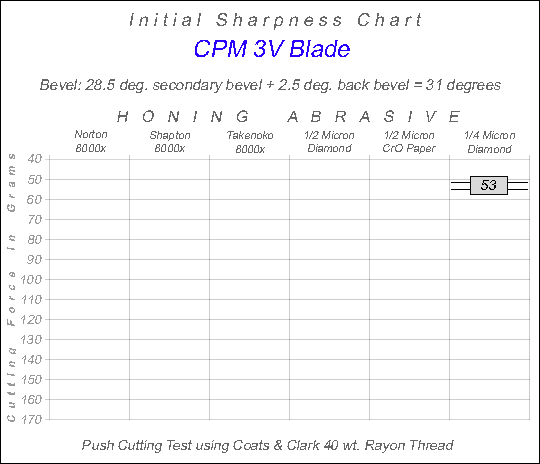To test which blades would take the sharpest edge, I honed the blades using an elaborate honing jig and my most careful technique. Then I tested their sharpness by cutting loops of thread. (Click here for a description of this test.) The blades that tested less sharp were rehoned and retested to see if better honing would bring them up to the level of the sharpest blade. If I rehoned the originally sharper blade, it would often fail to match its previous performance. For a while I stopped trying to discern differences between the blades because the variation in sharpness seemed to be due to my honing technique rather than to the properties of the blades. All of the edges were very sharp by practical woodworking standards.
I started the edge retention tests using a Norton 8000x waterstone to hone all of the blades. After repeated attempts to produce the sharpest edge on each of the blades, I concluded that the plain high carbon steel and the A2 blades reached a level of sharpness I could not duplicate on the high alloy blades.
The poor performance of the Holtey S53 blade when honed with the Norton stone surprised me because the blade had performed better in earlier tests when it had been honed with 1 micron diamond paste. When I rehoned the S53 using diamond, its sharpness was similar to the sharpest edges I had produced on other steels. The CPM 3V also attained a significantly sharper edge when honed with diamond. The chart below shows the difference in initial sharpness and edge retention of the S53 blade when honed using the Norton 8000x waterstone and 1 micron diamond:
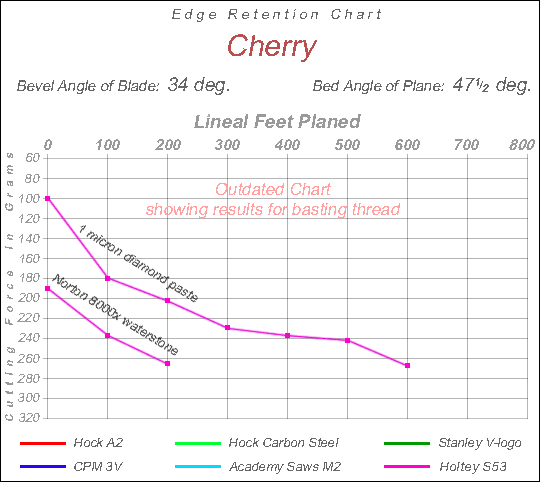
After realizing that each alloy might require a certain abrasive to achieve its sharpest edge, I started testing the initial sharpness produced on each blade by different honing abrasives. The results of these tests are summarized in the charts below.
It turned out that all of the blades tested were brought to excellent sharpness when honed with fine diamond. My current testing procedure is to hone all of the blades using ¼ micron diamond paste.
At this time I haven’t answered the question of whether some steels will take a sharper edge, but the level of sharpness I’ve attained on each of the blades is so good that I believe the question has little practical significance.
Here are the results of sharpness tests on the freshly honed blades:

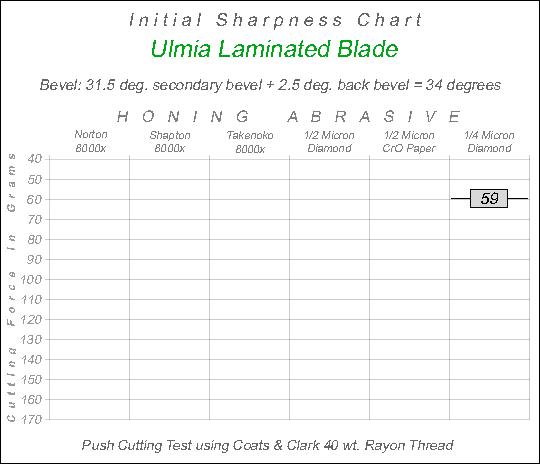
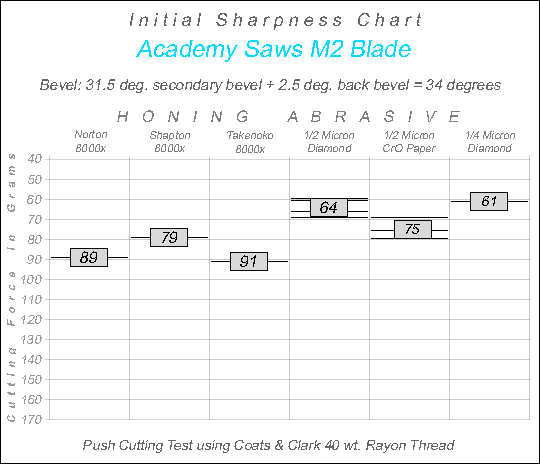
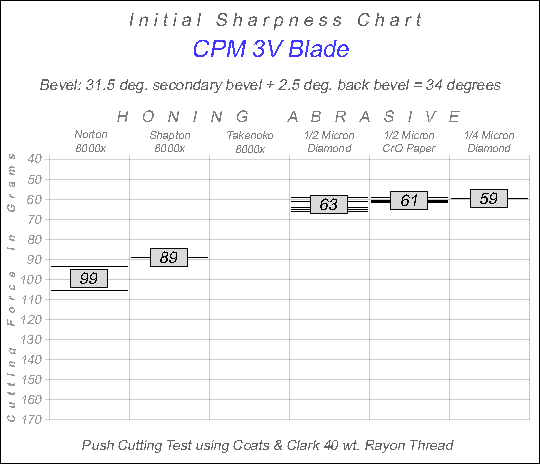
The numerical result for each blade is either the average of several tests or the result of a single test. The horizontal lines behind the numerical results record individual tests. For the diamond honing I have done repeated tests to try to determine whether the small differences in the averages are significant. At this point, they are not. I would estimate that the numerical averages are accurate within about +/- 3 grams.
Initial Sharpness at Smaller Bevel Angles
The blades that resisted chipping and deformation at 34º are being tested at more acute bevel angles. The first results suggest that the blades perform better at somewhat more acute angles. (See the page on Bevel Angles.)
The initial sharpness tests better at the more acute angles, as can be seen in the charts below.

